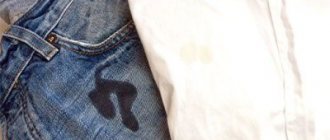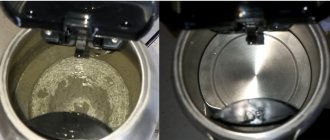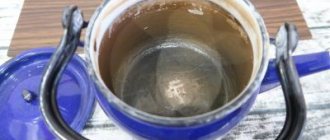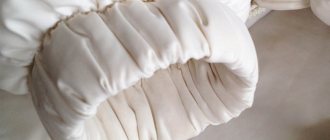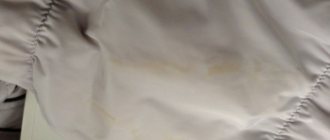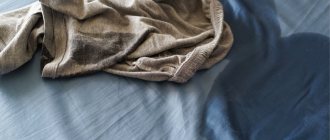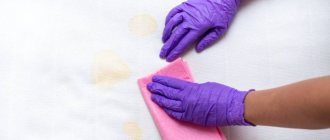There is little that can compare with a walk in a clean coniferous forest that smells of pine cones and mushrooms. And no one will be able to deny themselves the pleasure of going to a Russian bathhouse, hot and fragrant, with the aroma of a birch broom and droplets of resin emerging from the heat.
But both a walk among the pines and a good bath can lead to the same trouble, namely resin in the hair. Sticky substances getting tangled in your strands can make life very difficult. Therefore, when this problem is discovered, you need to decide how to remove the resin from the hair on your head. Fortunately, there are many ways, and everything necessary for the procedure is available in every home.
Vegetable oil
How can I remove resin? The most affordable remedy is vegetable oil, olive or sunflower. They need to generously lubricate the area with resin and rub it into the tangled hairball. After some time, it will become more pliable, the resin will gradually begin to lag behind the hairs, then it needs to be carefully combed out with a fine-toothed comb.
After the resin is removed, you need to wash your hair several times with shampoo to wash away the oil from your hair. Then rinse your hair with conditioner, which will make it easier to comb matted hair.
If the curls are sparse
It is somewhat easier for owners of thin hair than for owners of thick hair, because they can simply comb out the resin. This method is good for small areas of contamination.
First, clean hair is separated and curled to keep it out of the way. Next, take a fine-toothed comb and begin combing a small area from the ends. It is from the ends, and not from the roots, because this will cause the “nest” to itch, which will only have to be trimmed.
To make the task easier, it’s a good idea to lightly lubricate the teeth of the comb with sunflower oil. Afterwards, wash your hair with shampoo.
Alternatively, coat the entire area with oil and comb out.
Baby cream
Vegetable oils are not the only fat-containing product that can help cope with oleoresin. How to remove resin from hair after a bath? Baby cream is perfect for this purpose. And this is the most gentle, accessible and pleasant remedy. The cream smells good, it is hypoallergenic, softens the skin if particles of oleoresin get on it and reduces irritation. It can be used by both adults and children.
Resin is removed using baby cream as follows: the product is rubbed in and then removed from the hair with a thick brush along with the resin. Repeat the required number of times, then wash off the remaining cream with soap.
How to remove resin from hair with other fat-containing products? This is done using the same method, and as analogues you can use peanut butter, mayonnaise, Vaseline, massage oil, body milk, etc.
Mechanical methods
Large pieces of soft resin are removed with a plastic scraper or other object that you don’t mind throwing away after the procedure. To avoid getting dirty, put gloves on your hands or wrap them in plastic.
A more dangerous method is to use a razor, little by little breaking off pieces of the frozen mass. Extreme caution is required here to avoid serious injury.
https://www.youtube.com/watch?v=zGvNxw4RJhE
The resin is removed with a razor.
You can get rid of the resin after it has set. You will have to spend time and put in a lot of effort, but good results are achievable. Ice will help with this:
A similar method: cover the stain with any oil or fat. It will soften the resin, making it easier to remove from the skin.
. It is acceptable to use vegetable oils, baby oils, and tanning products. The cream works in a similar way.
You can remove resin using cream in the following way:
Mechanical methods of rubbing off hardened resin are dangerous. Cream and oil are the most gentle means
. You can also use the oil in the following ways:
"Coca Cola"
Coca-Cola is a very useful drink in the household. You can drink it, clean the bathtub from rust, and rid the kettle of limescale. The activity of the drink is explained by its composition: Coca-Cola contains carbon dioxide and phosphoric acid (which, by the way, causes thirst, which makes it almost impossible to get drunk with cola). These same components are also found in other sweet sodas, such as Fanta or Sprite.
And they are the ones who will help get rid of the resin in your hair. How to remove tar from hair using cola? To do this you need to prepare a solution: 0.5 l. soda for ½ tbsp. l. baking soda. Stir and dip the damaged strand into the solution for 10 minutes. Rinse hair thoroughly with shampoo.
Why is it important to clean stains quickly?
Often, after installation and finishing work in the bathroom, sloppy smudges of epoxy remain on the tiles, since the grout is made on its basis. Or epoxy glue was used to attach the cladding panels.
If the surface is light enough, such unsightly smudges and stains will spoil the whole picture of a fresh renovation. You can remove stains from tiles using a variety of methods.
Heating method. We remember that epoxy resin-based glue can soften. Therefore, we arm ourselves with household appliances: a hairdryer or a steam cleaner. We direct a stream of hot air onto the dirt and wait for it to melt. After some time, we clean off the softened dirt with a spatula and wash it with conventional products. Freezing method. A more complex but effective way to clean tiles. We will need a special refrigerant in an aerosol package. Having previously protected the skin and eyes with protective clothing and goggles, spray the liquid from the can onto the stain. After a few minutes, the fragile resin particles can be easily scraped off with a regular scraper or spatula. Chemical reaction method. You can quickly remove resin from ceramics, marble, and earthenware using chemical reagents. It can be boric, hydrochloric, nitric acid
Having treated the surface very carefully with the reagent, after a while we wash off the dirt with a concentrated washing solution.
As the experience of home-conscious and thrifty housewives shows, even such incredible pollution can be quickly eliminated without any special financial costs or titanic efforts. Take note of these simple recommendations, and your everyday problems will be solved quickly and effectively.
As I said above, the resin has the ability to penetrate very quickly into the fiber structure of the fabric. It poses a serious threat not only to jeans or shirts, but also to pots and other kitchen utensils.
Due to its viscosity and ability to set quickly, measures should be taken to clean contaminated products immediately. Otherwise, you will have to put up with the remnants of the stain or simply throw away the stained item. Only timely intervention can prevent the process of resin penetration into the structure of the object.
It is important to understand that the frozen resin stain itself can be removed without much difficulty. But after it there will be a visible trace of a dark color, which will inevitably ruin the clothes
Products for removing tar from skin
Products for removing tar from skin
Before washing the resin off the skin, it must be softened. Sunflower oil cleans the substance perfectly - it can change its consistency, making it more liquid, and thus allowing you to easily remove resinous traces. Vegetable oil can be used to wash resin off the hands of both adults and children without the risk of causing harm. However, it will not be possible to remove contamination with one movement. To remove tar stains from the surface of the skin, you need to:
- dip a cotton swab into the oil, thoroughly saturating the cotton wool with it;
- Rub the oil into the skin with gentle massaging movements without pressure for 5 - 30 minutes - depending on the size of the contamination;
- wash your hands with hot water and soap.
Another skin-harmless substance that can be used to wash pine resin is drinking ethyl alcohol. A moistened cotton pad is applied to the area of contamination for 15-20 minutes, after which the softened resin is wiped off with the same swab.
Food grade citric acid is also a product that can cleanse the skin of persistent impurities, including resin. To get rid of traces of tree resin, you need to take a cotton swab or foam sponge, moisten it with water, dip it in the powder and wipe the contaminated area. You should wash it moving from the edges to the center of the stain.
After this, the remaining resin along with the acid is thoroughly washed off under running warm water and soap, and the hands are lubricated with any nourishing cream. It is not recommended to use acid if there are microtraumas on the hands - cracks, scratches, etc., as well as if we are talking about children's skin: this can cause irritation.
Mayonnaise is best suited for washing off oleoresin from hair. You need to do the following:
- Thickly lubricate the stained strand.
- Wrap your head in plastic wrap for half an hour.
- Wash off under running water with baby soap.
Turpentine
The next method for removing resin from scalp hair is based on the use of turpentine. You just need to purchase special purified gum turpentine, which, unlike its technical counterpart, does not cause burns, irritation or redness on the skin. At the same time, it softens the resin well.
The recipe is as follows: 2 tbsp. l. dilute starch with 8 drops of highly purified turpentine and add 6 drops of ammonia. The resulting mixture is applied to the problem area, the resin is softened and combed out of the hair. Then the curls should be thoroughly washed with shampoo.
Cleaning bathroom tiles from epoxy adhesive
Advice! Large pieces of dirt must first be mechanically scraped off with a knife or a thin file. This method is applicable only for rough work clothes: overalls, denim trousers, aprons
Finer fabrics should be cleaned delicately and carefully. You can remove stains at home using well-known products.
For best results, glue stains must be frozen. We place the clothes in the freezer for two to three hours, the cleansing process will go faster and more efficiently.
- Alcohols. Wine, ammonia, and denatured alcohol are excellent means for resuscitating your favorite clothes. We moisten a piece of clean rag or a cotton-gauze swab in alcohol and begin to clean the dirty stains. As a rule, with some effort, it is quite possible to achieve complete victory over the dirt.
- Turpentine. Natural pine extract has a good cleansing effect. For fabrics, it is better to choose pharmaceutical gum turpentine rather than technical turpentine. Apply generously to the stain and leave it on the clothing material for a while. Take a soft brush and scrub the stain. Turpentine has a sharp, characteristic odor, which can be eliminated by subsequent washing in the machine with aromatic powder and conditioner. For stubborn stains, use a solution of turpentine and alcohol mixed in equal parts.
- Melting. Epoxy can both harden and liquefy. For this purpose, a heating method is used. For fabric, ironing stains with a hot iron works well. Lay the material out on an ironing board and place a piece of clean plain fabric or a paper towel on both sides under the stains. With intensive ironing, the glue will gradually melt and be absorbed into the substrate. After the procedure, light stains should also be rubbed with alcohol to consolidate the effect. The final stage of cleaning will be automatic washing of clothes on a standard cycle.
- Store-bought stain removers. Some types of stain removers are very successful at removing even stubborn stains such as epoxy glue. Stains from white clothing should be washed with oxygen-containing bleaches. Soak a white item in warm water, add bleach and leave for 1-2 hours to act. Yellowish stains on the fabric after soaking will disappear when washed in an automatic machine.
- Solvents. Silk and synthetic fabrics lend themselves well to cleaning with a range of solvents. Printed fabrics can be cleaned with nail polish remover; it is less aggressive to fibers and patterns. For difficult to remove stains from plain clothes, white spirit or acetone are more suitable.
As practice shows, non-trivial ways to save wardrobe items dear to your heart also work.
For example, the well-known brands of carbonated drinks “Coca-Cola” and “Pepsi-Cola” have proven themselves well as a powerful household cleaner.
Of course, there is no need to add lemonade to the washing machine, but it is quite possible to mechanically remove stains from colored fabrics. After the obvious cleaning effect, it is better to wash the item thoroughly.
Often, after installation and finishing work in the bathroom, sloppy smudges of epoxy remain on the tiles, since the grout is made on its basis. Or epoxy glue was used to attach the cladding panels.
If the surface is light enough, such unsightly smudges and stains will spoil the whole picture of a fresh renovation. You can remove stains from tiles using a variety of methods.
Heating method. We remember that epoxy resin-based glue can soften. Therefore, we arm ourselves with household appliances: a hairdryer or a steam cleaner. We direct a stream of hot air onto the dirt and wait for it to melt. After some time, we clean off the softened dirt with a spatula and wash it with conventional products. Freezing method. A more complex but effective way to clean tiles. We will need a special refrigerant in an aerosol package. Having previously protected the skin and eyes with protective clothing and goggles, spray the liquid from the can onto the stain. After a few minutes, the fragile resin particles can be easily scraped off with a regular scraper or spatula. Chemical reaction method. You can quickly remove resin from ceramics, marble, and earthenware using chemical reagents. It can be boric, hydrochloric, nitric acid
Having treated the surface very carefully with the reagent, after a while we wash off the dirt with a concentrated washing solution.
After working with epoxy compounds, stains may remain on tiles or glass. If the mass has not yet hardened, you can wipe it off with a dry cloth and wash the area with detergents and water.
Do not clean tiles or glass with abrasives. Mechanical processing will leave scratches on the glass, and a layer of glaze and paint can be removed from the tiles.
Acetone
What else can you do to remove pine resin from hair? Acetone and substances containing it can deal well with sticky substances. For example, nail polish remover. The procedure for working with acetone is as follows:
- Go to a well-ventilated area.
- Apply a little solvent to a cotton pad.
- Apply to the resin for a maximum of 5 seconds.
- Clean off the resin with the same disc.
- Rinse your hair well with plenty of shampoo.
Acetone should not be used when removing resin from the hair of children or people with high sensitivity to solvents. Also, this method cannot be used by those who have diseases of the respiratory system. It is strictly forbidden to open the solvent in enclosed spaces, as its fumes are toxic.
You can also find solvents for epoxy resin in stores - DMSO and DMF. Both will work well with tree resin, but you absolutely cannot use them to cleanse your hair and body! They are extremely dangerous and toxic.
In addition, you cannot use SP-6 remover or any acid other than citric acid. These substances cause severe chemical burns!
The nuances of removing various types of resins
Wood resin is much easier to remove than synthetic resin. By its nature, it is softer and contains substances such as alcohols, acids and oils. The use of compositions based on similar components (ethanol, turpentine, other solvents) allows you to effectively remove the resin ball without much effort.
Epoxy resins contain hardeners . This makes most of them resistant to weak acids and alkalis. Therefore, it is recommended to remove the resin from the hair within several hours, until it has completely hardened.
Lemon acid
How to remove resin from hair using citric acid? It is the same chemical solvent, only softer and safer. In order to get rid of tree sap you need:
- Take a sponge and moisten it with warm water.
- Pour citric acid onto a sponge.
- Wipe the resin from your hair.
- Rinse with warm water, rinse hair with shampoo.
Instead of citric acid powder and water, you can use natural lemon juice - apply it to a cotton pad and wipe off the sticky substance.
This substance is not recommended for use on areas close to the skin as it may cause irritation. If there is damage to the skin, then it is better to use another product.
How to wash the resin of pine and other coniferous trees from the skin of your hands
You can also use acetone or gasoline to remove tree sap from your hands. But you need to remember that in this case the cleaning procedure must be carried out in a well-ventilated area.
In addition to solvents, traditional methods are also used.
The method is absolutely safe for children and adults. Can be used for any skin type. Sunflower oil changes the consistency of the resin to a more liquid one and softens the substance. This makes the resin easier to remove from the skin.
- Apply sunflower oil generously to a cotton swab.
- Rub it into the skin for 30–40 minutes until the resin comes off.
- Wash off with hot water and soap.
It is unlikely that you will be able to wash the resin with ordinary hand washing products (soap and liquid soap). My dad really washes off the tar with regular gasoline or kerosene, and then with regular soap. Sunflower or olive oil also helps.
You can wash your hands of stuck pine resin with regular vegetable oil.
Alcohol
The next method to remove resin from hair is to use regular alcohol. Strong alcohol makes the resin soft and viscous, and it is easy to clean it off with a cloth or cotton pad. But vodka is not suitable for these purposes, since it contains insufficient concentration of pure alcohol. Therefore, you need to purchase regular 95% medical alcohol. And since it is now sold only by prescription, you can arm yourself with its analogue - formic alcohol. Or buy an old-style men's cologne - “Chypre” or “Russian Forest”. They are still found in stores.
Alcohol is good because it softens the resin, and at the same time it quickly evaporates from the surface of the hair. At the same time, it is safe for use: both for adults and for children.
Method number 2. for thick hair
Thick hair looks beautiful and has a healthy appearance. But we always have to pay for beauty.
Even in childhood, people with thick hair suffered, tearing off burdocks and plasticine from them.
How to properly remove resin from such hair without depriving it of its beauty and shine? Very simple.
Frozen resin turns into a hard pebble that can be easily broken off with your fingers. Therefore, to remove the resin, you will need ice, which you will use to freeze the resin, and then remove it with your hands.
After the procedure, freeze the contaminated curl again and remove any small remaining resin with a comb. Don't forget to wash your hair after the entire procedure.
Cold and heat
How to remove tree resin from hair using heat or cold? The action of this technique is based on the fact that when cooled, the resin becomes hard and easily crumbles, and when heated, it flows like water and can be easily removed with a cotton swab or towel. However, in reality this is quite difficult to achieve.
In order to get rid of the sticky substance, it is often suggested to use an iron: transfer the soiled strand between layers of clean fabric and iron it well. This way the resin will spread and be absorbed. The method looks quite dangerous, since you will have to use a heavy and hot object near your face. People with short hair, in principle, will not be able to use this method.
It is also difficult to remove the resin using cold: in order for the resin to harden, it must be placed in the freezer. If you try to cool it with pieces of ice, it will never harden to such a state that it crumbles easily and does not leave marks.
So in theory, both methods are good, and they work quite well when it comes to removing tar from clothes. But with hair it is better to use some other product.
Prohibitions
When removing resin, you should remember some prohibitions:
- It is possible to remove adhering substances using sharp objects, for example, a knife, only in limited situations - to cut off the “drop” itself. In other cases, the use of a sharp object is not advisable, as it may damage the base material itself.
- It is not advisable to use solvent chemicals to clean hair and hands. Aggressive agents can lead to irritation, cause an allergic reaction and even cause wounds.
- If the chosen remedy for removing resin does not help, and you plan to use another one, the previous one should be washed off.
- You should not use force when removing the sticky layer from the surface - this may damage the surface.
- There is no need to rush to wash a stained fabric item, since regular washing does not remove the resin.
Washing from clothes
After the composition gets on the fabric, the stains are absorbed very quickly and harden no less quickly. Aggressive techniques can destroy the fibers, so cleaning will lead to irreparable damage to the item. But you can try to clean small resin stains in this way:
- Ammonia solution 10% or ethyl alcohol. You should moisten the stain, and after a couple of minutes, clean it with the corner of a spatula.
- Freezing. Place the bag with the item in the freezer for a couple of hours, then scrape off the epoxy.
- Heating. Place white paper on the epoxy stain and iron it until the compound melts. Remove it with any suitable device.
There are also more exotic methods for removing stains. Thus, the resin can be dissolved by the action of Pepsi or Coca-Cola soda, after which it can be removed from the fabric. You can also lubricate the drips with the pharmaceutical preparation “Dimexide”. Mix it with water 1:3, wet the item, and remove the stain. After using any method, you need to wash the product in a machine with regular washing powder.
Waxing
Hair removal wax can be purchased at most cosmetic stores. You will also need strips of thick paper and medications to relieve skin irritation. Hairs about 5 mm long are best removed with wax; therefore, the area of the body being treated must be shaved 3-5 days before the procedure. Before hair removal, the skin must be thoroughly washed and dry. After waxing, it is not recommended to visit the bathhouse and sauna for 1-2 days, sunbathe or apply any cosmetics to the skin. The wax must be heated to 40 degrees, and it must be of a consistent consistency liquid honey. Apply this substance to the skin with a wooden spatula in the direction of hair growth. Press the prepared strip of paper on top. Wait a couple of minutes. The wax will begin to harden. At this point, pull the strip firmly against the direction of hair growth. With your left hand, lightly stretch the skin in the place where you begin to remove the strip of paper. Remaining wax can be removed with a cotton swab dipped in vegetable oil. Skin irritation, which occasionally occurs after waxing, can be relieved by wiping the injured areas with camphor oil.
Absolutely, it is quite problematic to get dirty with pine resin or, as it is also called, resin.
This is only acceptable when walking through a park or forest, installing a New Year's tree during the holidays, or working at a construction site. But even if you get dirty, there is nothing terrible about it, you don’t have to throw away your clothes, you can absolutely clean them. You will need
- – gasoline;
- – acetone;
- – white soap;
- - starch;
- – turpentine;
- – ammonia;
- - hydrogen peroxide;
- - alcohol;
- - vegetable oil.
Instructions
1. Clean the stained item and then you can begin the careful task of removing the stain. To do this, take a cotton swab or a soft brush, soak it in the product of your choice and start wiping the stain from the edges to the middle. This will prevent the stain from spreading over a larger area of the fabric. If the need arises, increase the concentration of the product. 2. If you don’t have a special stain remover for resin on hand, then use solvents (gasoline, benzene, acetone), only if the stain is fresh. 3. You can also use a more gentle method. Dilute white soap with gasoline in equal proportions, wipe the stain with the mixture, leave for an hour and rinse. 4. Remove old spots on dark woolen fabrics using a mixture of potato starch (1 tsp) and a few drops of turpentine or ammonia. Apply the mixture to the stain and leave until dry, clean with a brush. If the spot does not disappear, repeat the treatment again. A yellow spot may remain on the fabric; try removing it with a solution of hydrogen peroxide. 5. A resin stain can be easily removed from cotton fabric with turpentine. If it does not come off the first time, then generously moisten it with turpentine again, leave until the resin dissolves, then wipe with alcohol and rinse with water. You can also pour a mixture of turpentine and alcohol in equal proportions onto the stain and iron the fabric through blotting paper. 6. solvent -supported resin from leather products Better try to clean it with vegetable oil, which can be easily washed off with dishwashing detergent. You can remove the resin by spreading butter on the stain and letting it sit for several hours, then wash it as usual. 7. If you freeze the stained clothes in advance, the resin will be easy to scrape off, and the remaining stain can be removed by ironing the area with a hot iron through a napkin folded in 2-3 layers. Note! Before you begin removing resin or stains from it, determine the type of fabric and test it for resistance to different stain removers. It may turn out that the material itself is not resistant to hostile means.
How can you scrub with special compounds?
In addition to household products, resin removal is possible using special reagents that specialize in removing varnishes and paints based on resins and their derivatives.
Gum turpentine
Unlike technical turpentine, it does not burn the skin and does not cause an allergic reaction. Can be purchased at the pharmacy in the form of a balm. The average cost is 200 rubles. for 250 ml.
How to clean with white spirit?
The application technique is the same as with other organic solvents. However, the procedure time should be shortened, since prolonged inhalation of vapors negatively affects the central nervous system. Sold at any hardware store. The average cost is 100 rubles. for 0.5 l.
Preparing for cleaning
Having discovered a dark tar stain on the leg or sleeve of a blouse, the first thing you need to do is remember how it could have appeared. If trouble occurs after a walk in a park planted with coniferous trees, or while picking mushrooms in a pine forest, then we are talking about tree resin. It’s another matter if the stain appeared during repairs or after going to a construction site. In this case, we can assume that the resin is epoxy.
Resin type – wood (natural) or epoxy
There are two types of resins: natural, or wood, and synthetic. But they are all characterized by incredible stickiness, the ability to quickly penetrate the fabric fibers and glue them together.
Before cleaning begins, it is necessary to correctly determine the type of resin.
- Tree resin (tar) is a viscous, oily liquid of a dark brown color. It is formed as a result of the hardening of the sap of some trees. Resin is produced by pine trees, spruce trees, larches, poplar buds, thuja and other plants.
- Epoxy resin is a representative of synthetic substances, as it is produced chemically. Such resins are widely used in households, construction, and manufacturing. Epoxy exhibits its binding properties only when combined with a hardener and is resistant to acids and alkalis.
Vegetable stains are much easier to remove than stains caused by epoxy resin.
Fabric material
To select a cleaning product, it is important to know what fabric the stained jacket or blouse is made of. Otherwise, a hole may form in place of the stain, the paint may peel off, or some other problem may occur. The composition of the material and methods of caring for the product are indicated on the label.
If the information is erased or the label is cut off immediately after purchase, you should follow these rules:
The composition of the material and methods of caring for the product are indicated on the label. If the information is erased or the label is cut off immediately after purchase, you should follow these rules:
- Wool and natural silk do not tolerate exposure to strong alkaline solutions. To clean the surface of these materials from resin, ammonia or a mixture of starch (1 tsp) and turpentine (5-6 drops) is used.
- Turpentine or acetone will help remove the viscous substance from cotton fabric. When the resin has dissolved, wipe the contaminated area with alcohol and rinse with water.
- Acetate silk and bologna fabric are treated with purified gasoline. Acetic acid and acetone should not be used to process these materials.
- Nylon and nylon do not tolerate treatment with gasoline, benzene and alkaline solutions. Resin stains from these materials must be removed with warm water and laundry soap.
- Leather items cannot withstand exposure to solvents. For them, the best cleaning agent is vegetable oil.
- Jeans stained with wood resin can be easily cleaned with turpentine and ammonia, using them in equal quantities. Potato starch is added to the solution to obtain a thick paste, and the area of contamination is coated. After drying, the remaining paste is brushed off and the pants are washed.
- A jacket made of membrane fabric can be scrubbed using turpentine and laundry soap. Turpentine is diluted with water in a ratio of 1:2, grated soap is added to the mixture and the soiled part of the clothing is washed.
Fresh or old stain?
A fresh stain that has just appeared is always easier to remove than an old one. Therefore, as soon as a resin blot is discovered, you must immediately begin cleaning:
- Use a paper napkin or handkerchief to blot the resin, trying to collect a thick mass from the surface of the material.
- Do not wash, much less soak, the product. This will not help the matter; the stain will spread even more.
- If you don't have a stain remover on hand, you can try to get rid of the stain using vegetable oil. In case of failure, you will have to start processing with other substances suitable for the composition of the fabric.
How to prepare things for stain removal?
Before applying the cleaning agent, the affected product must be prepared as follows:
- Shake out the dust and clean the surface of the clothing with a brush.
- Test the durability of the fabric in an inconspicuous area, such as a pocket or side inseam.
- Place the product on a table or floor and place a board wrapped in cotton material under the stain.
- If the product has a lining, it is peeled off in advance so that it is possible to place a board between the top and the lining fabric.
- The fabric around the stain is moistened with water. This will prevent the formation of divorces.
The product is ready for cleaning. Now all you have to do is choose the right tool - and you can get to work.
